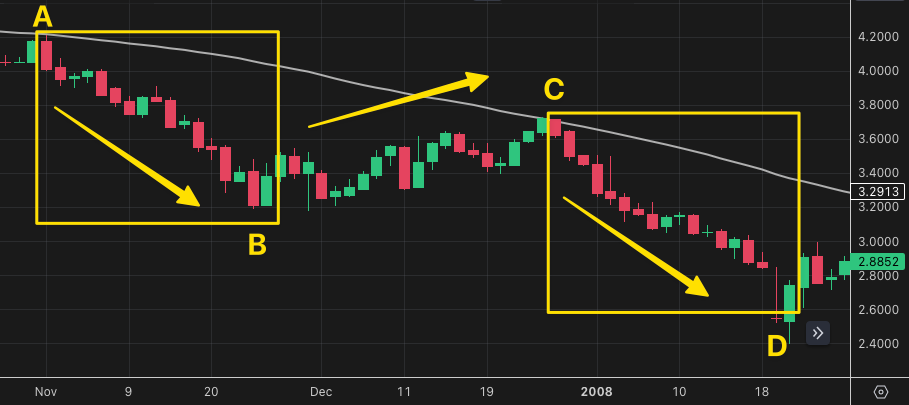Measured move analysis is a quick forecasting method used to project interest rates and prices in financial markets.
It's based on the principle that rate or price movements tend to be symmetrical.
In a mortgage context, we often use measured move analysis to project bond yields or other market rates.
Typically a move will have three parts:
(A) An initial move (up or down)
(B) A consolidation phase
(C) A continuation move in the same direction as (A).
For example, suppose rates have fallen 100 bps and then consolidated for a while. To estimate where rates might be headed:
- measure the distance from the start of the drop (A) to the bottom of the initial move lower (B)
- subtract that amount from the highest price/rate (C) after the relative low (B)
- that gives you the estimated destination (D)

Measured moves are based on the fact that prices (or yields) that move powerfully in one direction—and then consolidate—tend to keep moving in that same direction to a similar extent.
It's far from foolproof, but it works more often than not.
